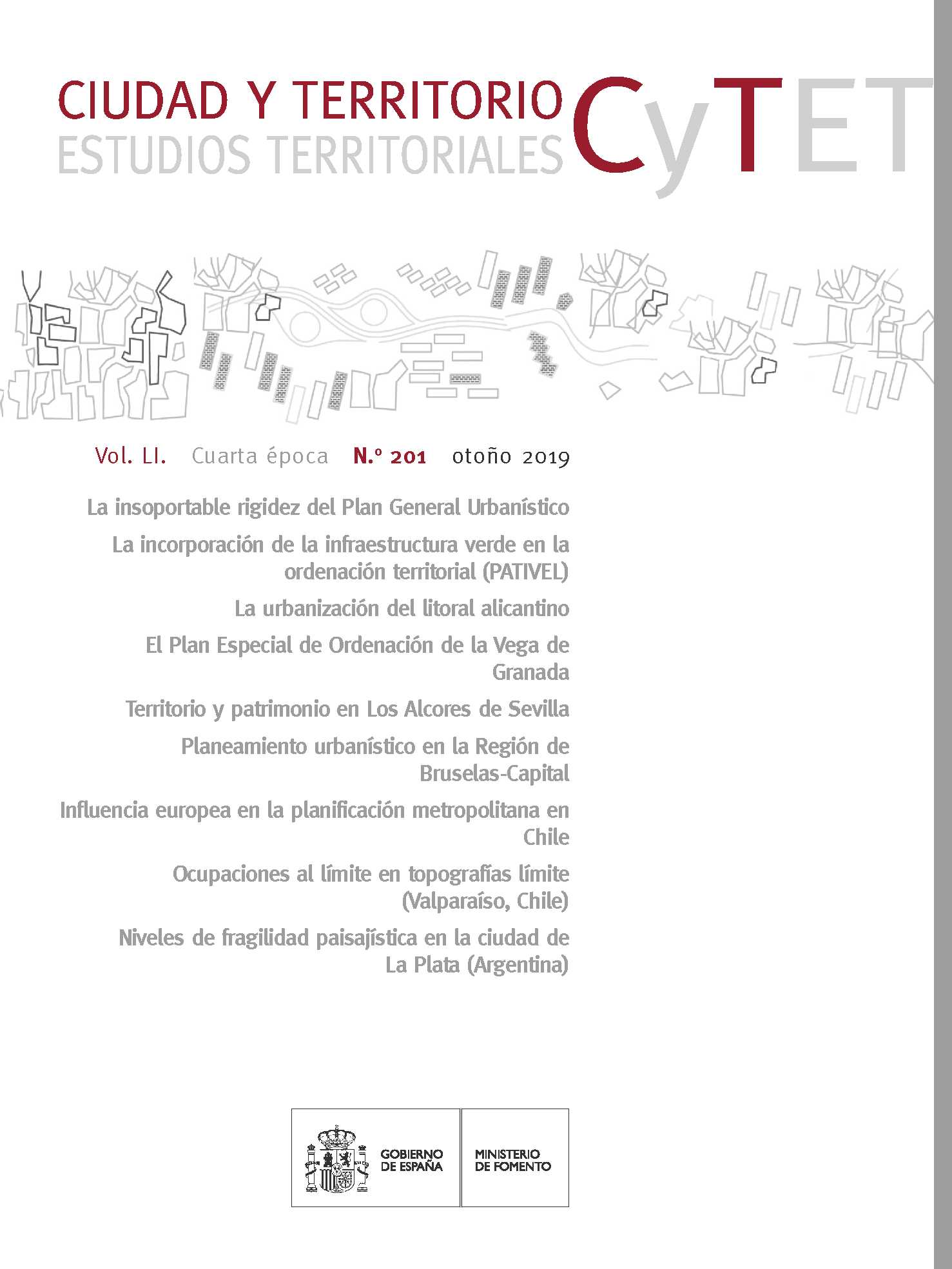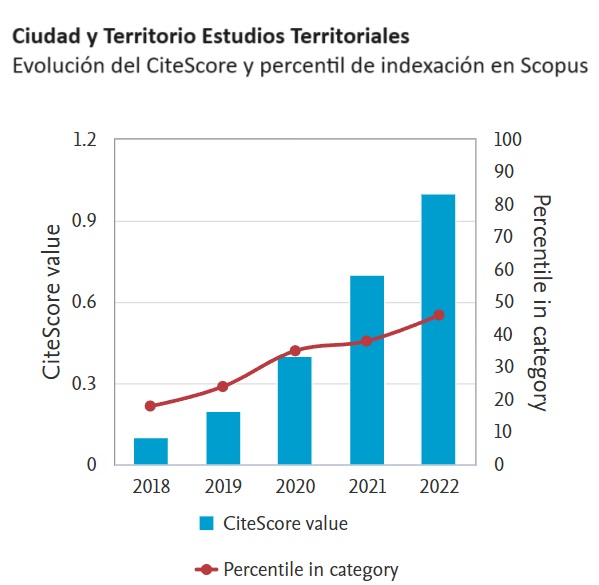The Special Territorial Plan of the Vega de Granada: Proposals with environmental implications for a peri-urban agricultural area
Keywords:
Peri-urban agricultural área, Territorial planning, Territorial management, EnvironmentalAbstract
The Vega de Granada is possibly the most extensively planned area in Andalusia. In this region, the Junta de Andalucía has the competences for the promotion and development of the foreseen actions in the subregional planning. One of the usual procedures consists of the application of Special Territorial Plans, a proper tool for the definition and implementation of supramunicipal systems of open spaces, as well as for the protection and enhancement of areas with heritage, agrarian, environmental or landscape values. The Special Territorial Plan of the Vega of Granada (PEOVG), in Initial Approval, acknowledges the great productive, patrimonial, environmental, landscape and non-residential value that this traditional rural area has, all of them identified within the Territorial Plan of the Urban Agglomeration of Granada (POTAUG, 1999). For this purpose, the sustainable development of the Vega de Granada in the context of the adjacent metropolitan area is considered as a fundamental aim, and the proposals are oriented to the protection and stimulation of the agrarian land, the protection and enhancement of its heritage, the improvement of the environmental and landscape quality, the sustainability of its transport mobility and the configuration of a model of public use. In this regard, this paper aims to assess the suitability of these proposals, the expected outcomes and the possible impacts of them. The analysis will be done through the monitoring/evaluation techniques of territorial public policies developed.
Downloads
Published
How to Cite
Issue
Section
License
Copyright (c) 2019 Juan Garrido-Clavero, Miguel Ángel Sánchez-del Árbol

This work is licensed under a Creative Commons Attribution-NonCommercial-NoDerivatives 4.0 International License.
Considering the provisions of the current legislation on Intellectual Property, and in accordance with them, all authors publishing in CyTET give -in a non-exclusive way and without time limit- to the Ministry of Transport, Mobility and Urban Agenda the rights to disseminate, reproduce, communicate and distribute in any current or future format, on paper or electronic, the original or derived version of their work under a Creative Commons Attribution-NonCommercial-NoDerivative 4.0 license International (CC BY-NC-ND 4.0), as well as to include or assign to third parties the inclusion of its content in national and international indexes, repositories and databases, with reference and recognition in any case of its authorship.
In addition, when sending the work, the author(s) declares that it is an original work in which the sources that have been used are recognized, committing to respect the scientific evidence, to no longer modify the original data and to verify or refute its hypothesis. Author(s) also declare that the essential content of the work has not been previously published nor will it be published in any other publication while it is under evaluation by CyTET; and that it has not been simultaneously sent to another journal.
Authors must sign a Transfer of Rights Form, which will be sent to them from the CyTET Secretariat once the article is accepted for publication.
With the aim of promoting the dissemination of knowledge, CyTET joins the Open Journal Access (OA) movement and delivers all of its content to various national and international indexes, repositories and databases under this protocol; therefore, the submission of a work to be published in the journal presupposes the explicit acceptance by the author of this distribution method.
Authors are encouraged to reproduce and host their work published in CyTET in institutional repositories, web pages, etc. with the intention of contributing to the improvement of the transfer of knowledge and the citation of said works.







